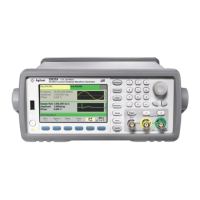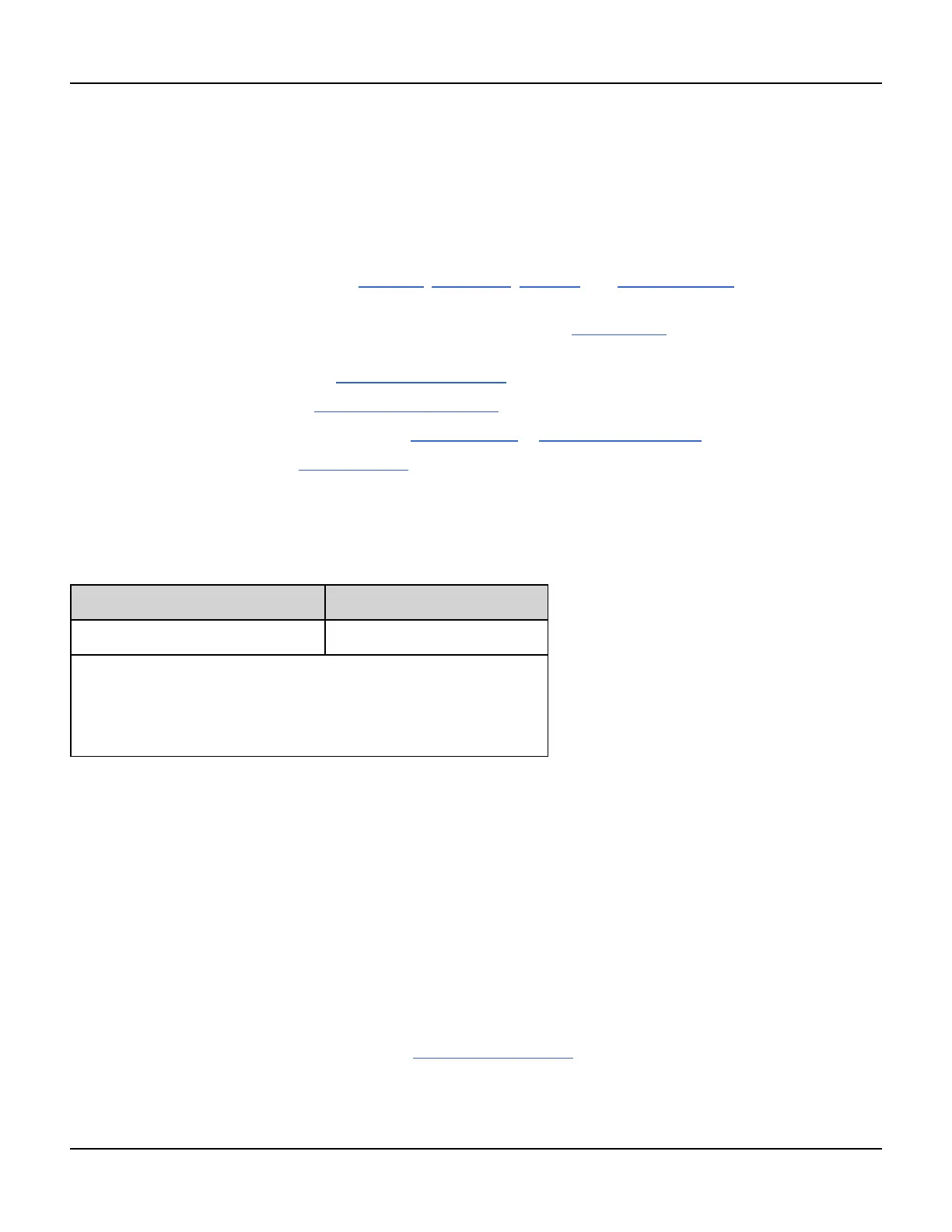PWM Subsystem
PWM Subsystem
The PWM subsystem allows you to perform pulse width modulation (PWM) on a pulse waveform.
Example
This summarizes the steps required to generate a PWM waveform.
1. Configure carrier waveform: Use FUNCtion, FREQuency, VOLTage, and VOLTage:OFFSet to specify the carrier
waveform's function, frequency, amplitude, and offset.
2. Select modulation source (internal, external, CH1, or CH2): PWM:SOURce. For an external modulation
source, skip steps 3 and 4.
3. Select modulating waveform: PWM:INTernal:FUNCtion
4. Set modulating frequency: PWM:INTernal:FREQuency
5. Set pulse width or duty cycle deviation:PWM:DEViation or PWM:DEViation:DCYCle
6. Enable PWM Modulation: PWM:STATe:ON
[SOURce[1|2]:]PWM:DEViation {<deviation>|MINimum|MAXimum}
[SOURce[1|2]:]PWM:DEViation? [{MINimum|MAXimum}]
Sets pulse width deviation, the ± variation in width (in seconds) from the pulse width of the carrier pulse waveform.
Parameter Typical Return
0 to 1000 (seconds); default 10 μs +1.000000000000000E+00
Set pulse width deviation to 1 s:
PWM:DEV 1
Set pulse width deviation to 0 s:
PWM:DEV MIN
l The deviation is a ± deviation, so if the pulse width is 10 ms and the deviation is 4 ms, the width can vary from 6 to
14 ms.
l The pulse width deviation cannot exceed the current pulse width, and is also limited by the minimum pulse width
(Wmin):
Width Deviation < Pulse Width – Wmin
and
Width Deviation < Period – Pulse Width – Wmin
l The pulse width deviation is limited by the current edge time setting.
Width Deviation < Pulse Width – (0.8 x Leading Edge Time) – (0.8 x Trailing Edge Time)
and
Width Deviation < Period – Pulse Width – (0.8 x Leading Edge Time) – (0.8 x Trailing Edge Time)
l If you select the External modulating source (PWM:SOURce EXTernal), the deviation is controlled by the ±5 V sig-
nal level present on the rear-panel Modulation In connector. For example, if you have set the width deviation to
272 Agilent 33500 Series Operating and Service Guide

